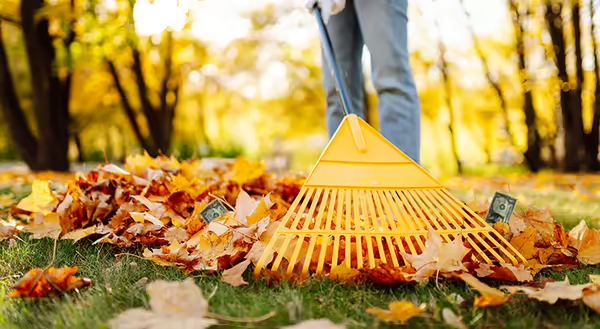
Fall leaves represent a valuable resource for your lawn and garden.
According to Rhonda Ferree, retired University of Illinois Extension educator, “Adding a two-inch layer of leaf mulch adds approximately 150 pounds of nitrogen, 20 pounds of phosphorus, and 65 pounds of potassium per acre (that equals 3.44 lbs of N, 0.46 lbs. of P, and 1.49 lbs. of K). Due to natural soil buffering and breakdown in most soil types, leaf mulch also has no significant effect on soil pH. Even oak leaves, which are acidic (4.5 to 4.7 pH) when fresh, break down to be neutral to slightly alkaline.”
Shredded leaves will break down faster, and they are less likely to be blown by the wind.
Does that mean you have to own a shredder? No, run over the leaves with your lawn mower, then place on your landscape beds or around shrubs and trees.
A 2-inch layer of shredded fall leaves on a landscape bed turns into a soft brown leaf mulch by spring. This mulch will reduce weeds and help hold soil moisture for next summer.
If you do not want to shred the leaves, place 6 to 8 inches of fall leaves on a garden and then till them in.
By tilling the leaves in, you will improve the tilth, drainage, and organic matter. You will also not have to worry about the winter winds blowing them elsewhere.
If you have a light covering of leaves, just run the lawn mower over them and they will decompose, adding nutrients and organic matter to your lawn.
Leaves can be composted by combining them with your kitchen fruit and vegetable scraps. This will make a nice garden amendment by next summer.
Make leaf mold.
Simply rake the leaves into a pile or place them in a simple wire bin, and let them set over the winter. If the leaves are shredded first, the mulch will be ready in 6 months. If the leaves are whole, then it will take longer, 9 to 12 months.
If you have perennials or hardy garden vegetables that you want to protect from cold temperatures, leaves can be used as insulation.
For our tender perennials like tea roses, a wire or burlap cage filled with leaves offers that protection. Leaves placed around the base of root crops and hardy vegetables can offer freezing protection in the late fall.